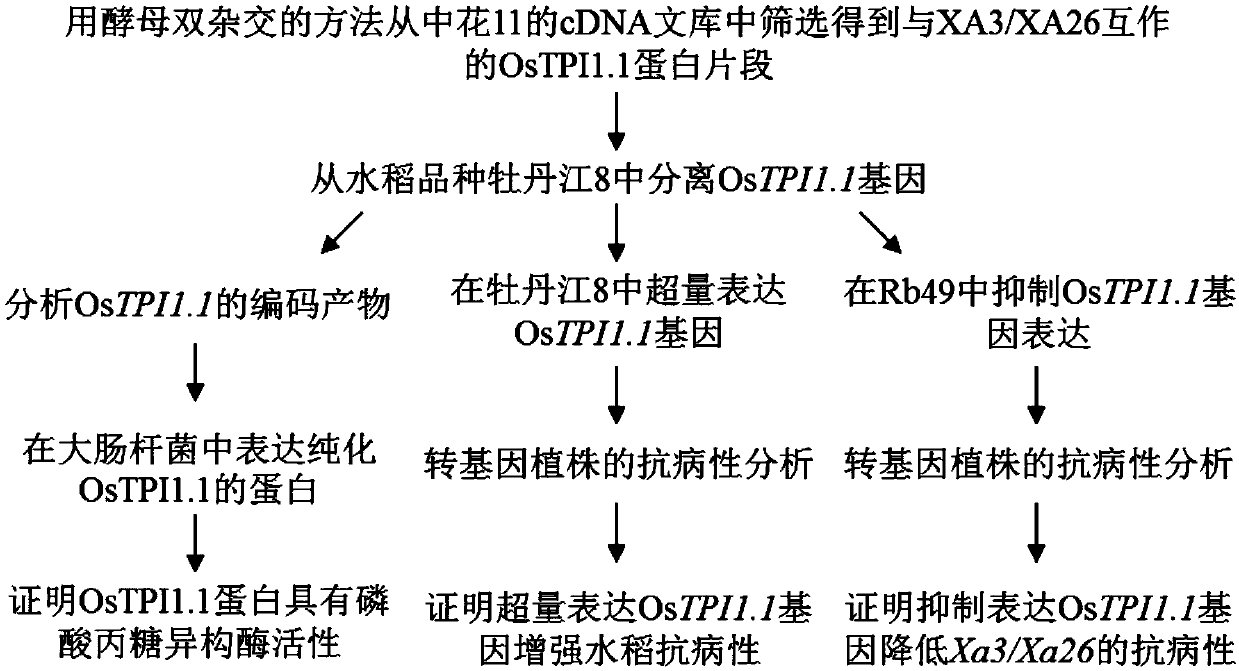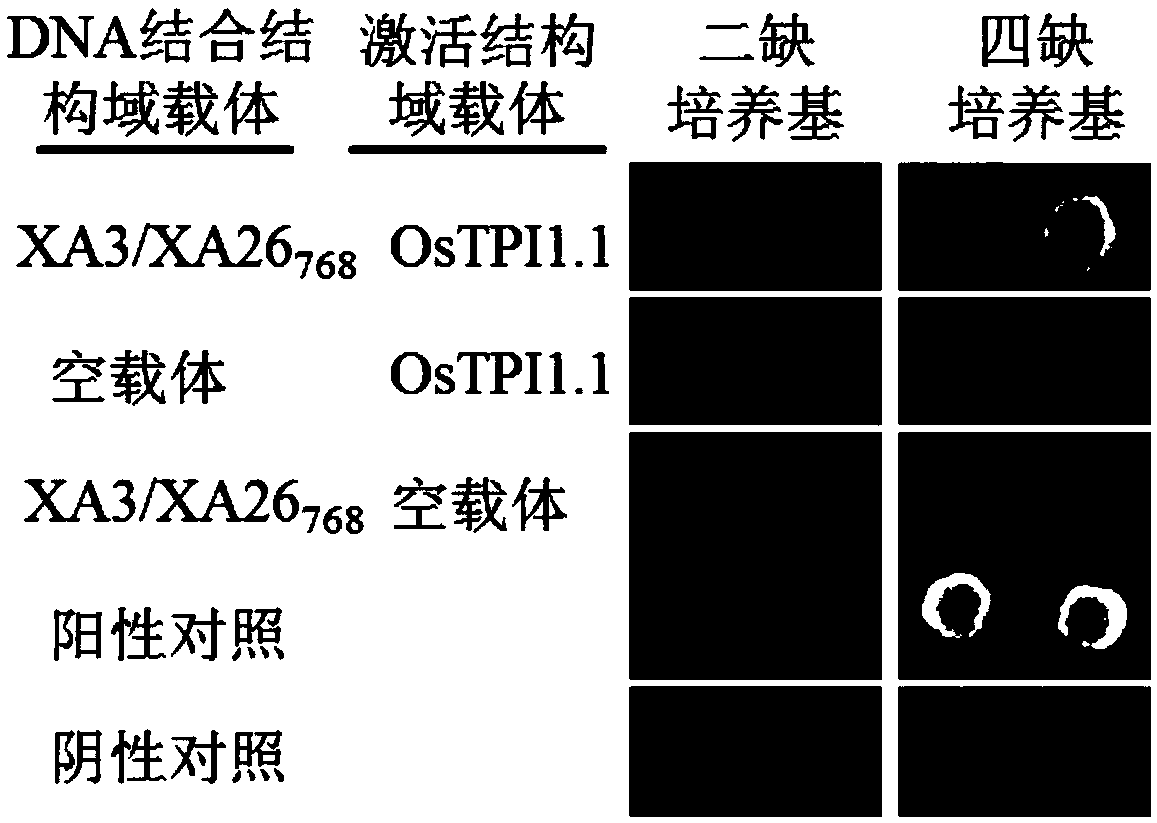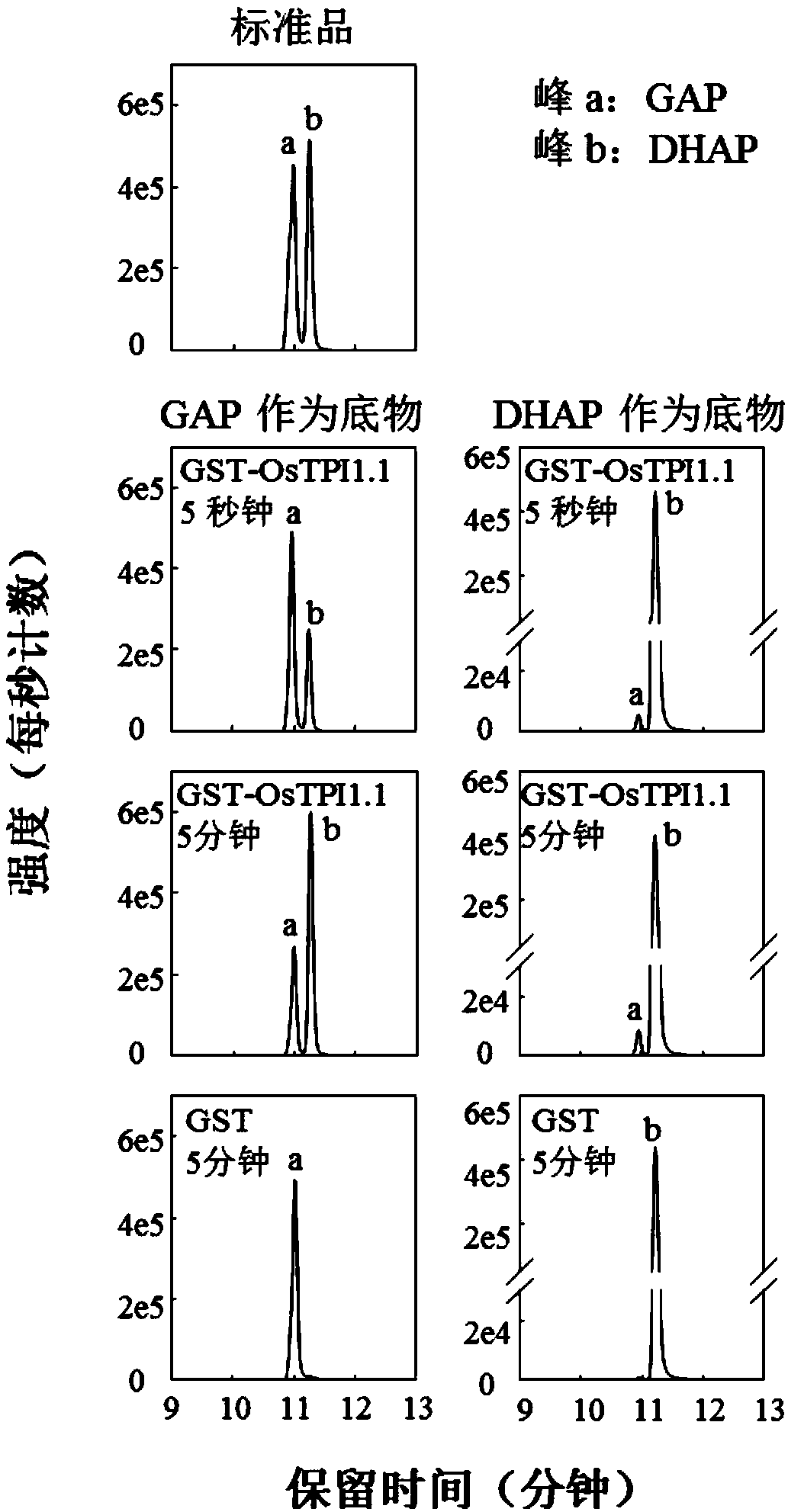Application of rice gene OsTPI1-1 to rice disease resistance improvement
A gene and rice technology, applied in the functional verification and application field of rice disease resistance-related gene OsTPI1-1, can solve the problems of no pathogen specificity and low resistance
- Summary
- Abstract
- Description
- Claims
- Application Information
AI Technical Summary
Problems solved by technology
Method used
Image
Examples
Embodiment 1
[0023] Example 1: Screening for interacting proteins of XA3 / XA26
[0024] The previous research results of the present invention show that the main disease resistance gene Xa3 / Xa26 can mediate broad-spectrum and long-lasting resistance to bacterial blight (Sun et al., 2004), and this gene has been used in rice breeding in China for many years (Gao et al., 2010). However, the identified factors related to this gene or involved in the disease resistance response mediated by this gene are still very limited, and their mechanism of action is still unclear.
[0025] The Xa3 / Xa26 gene encodes a cell membrane-localized receptor protein kinase (Cao Yinglong, 2007), which includes an extracellular LRR domain, a transmembrane region, and an intracellular near-membrane and kinase domain (Sun et al., 2004). The intracellular juxtamembrane and kinase domains of kinases are thought to transmit signals received extracellularly to the intracellularly. In order to better utilize the disease ...
Embodiment 2
[0034] Example 2: OsTPI1-1 (i.e. OsTPI1.1) in the rice variety Mudanjiang 8 (namely OsTPI1.1, the name of the gene in this specification is the same below, all changed to (i.e. OsTPI1-1) is a gene, the purpose of the modification is due to the patent electronic application system Names and names with a decimal point in the name are not accepted) Determination of cDNA sequence and protein activity
[0035] 1. Determination of OsTPI1-1 cDNA sequence in rice variety Mudanjiang 8
[0036] In order to obtain the full-length cDNA of the OsTPI1-1 gene in Mudanjiang 8, referring to the previous method (Zhou et al., 2002), the researchers first extracted the total RNA in the leaves of Mudanjiang 8, and then took 5 μg of total RNA and added DNaseI (Invitrogen company) after removing genomic DNA as a template, using oligo(dT) 15 The total cDNA was obtained by reverse transcription with oligomeric primers and M-MLV reverse transcriptase (Promega, USA). The registration number of OsTPI1-...
Embodiment 3
[0040] Example 3: Functional verification of OsTPI1-1 gene
[0041]The present invention adopts the genetic transformation method mediated by Agrobacterium to further verify the function of the gene by overexpressing the OsTPI1-1 gene in the rice variety Mudanjiang 8 and inhibiting the expression of the OsTPI1-1 gene in the material Rb49 carrying Xa3 / Xa26.
[0042] 1. Construction of genetic transformation vector
[0043] The overexpression vector used in the present invention is pU1301 (Qiu et al., 2007), which is a maize ubiquitin promoter (P Ubi ) Agrobacterium-mediated genetic transformation vector. Using the total cDNA of rice variety Mudanjiang 8 as a template, the full-length cDNA of the OsTPI1-1 gene was amplified with the primers K16-OxF and K16-oxR described in Example 2-1. After connecting to the TA cloning vector pGEM-T easy (Promega, USA), the positive clones were sequenced, and the cloned plasmids without mutation were digested with KpnI and BamHI to cut out th...
PUM
 Login to View More
Login to View More Abstract
Description
Claims
Application Information
 Login to View More
Login to View More - R&D
- Intellectual Property
- Life Sciences
- Materials
- Tech Scout
- Unparalleled Data Quality
- Higher Quality Content
- 60% Fewer Hallucinations
Browse by: Latest US Patents, China's latest patents, Technical Efficacy Thesaurus, Application Domain, Technology Topic, Popular Technical Reports.
© 2025 PatSnap. All rights reserved.Legal|Privacy policy|Modern Slavery Act Transparency Statement|Sitemap|About US| Contact US: help@patsnap.com



